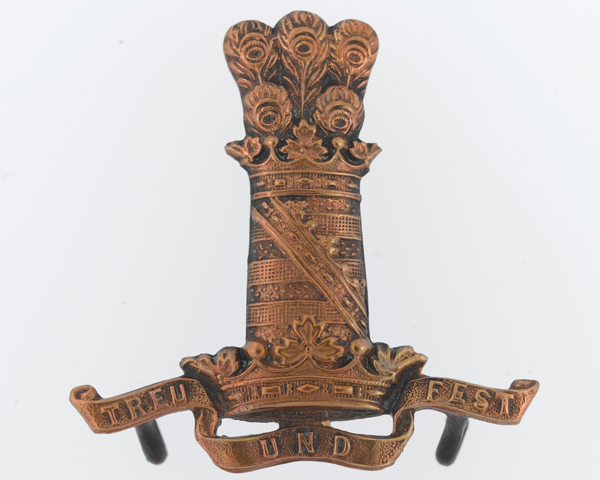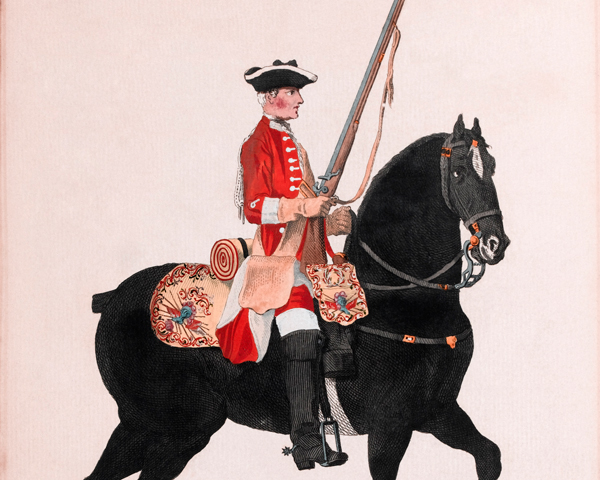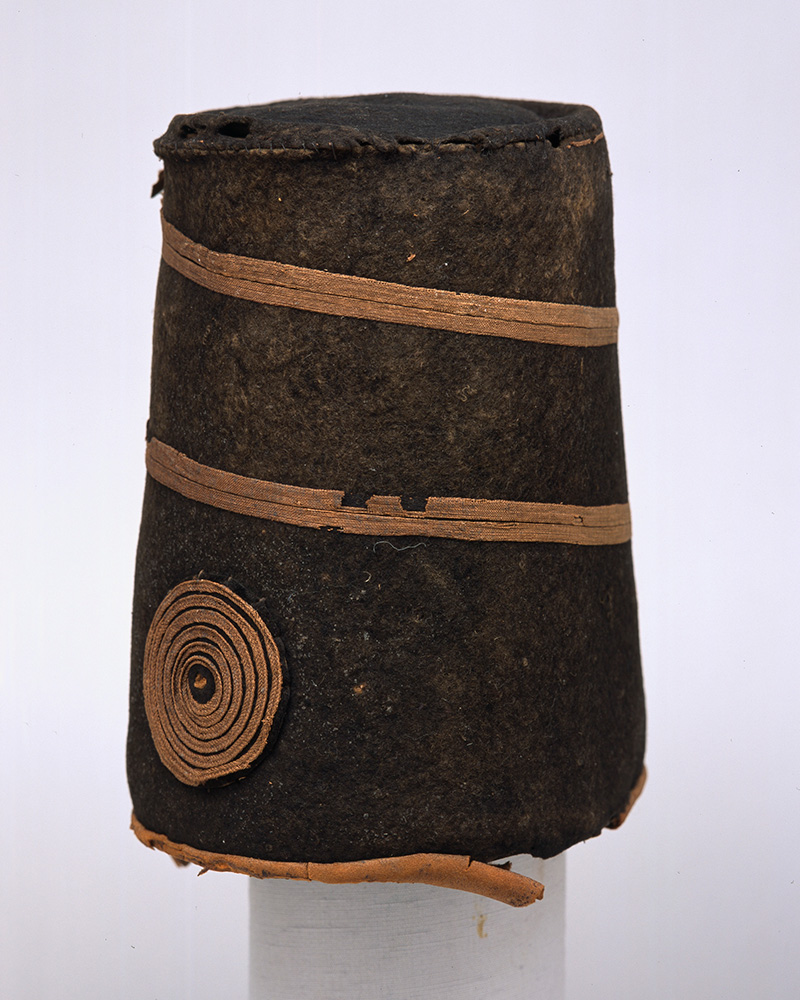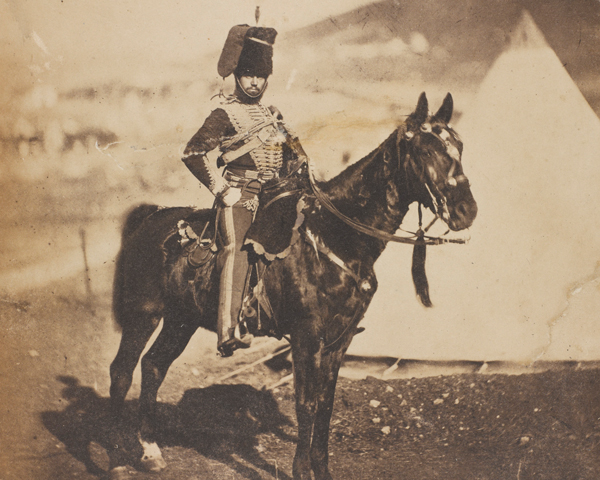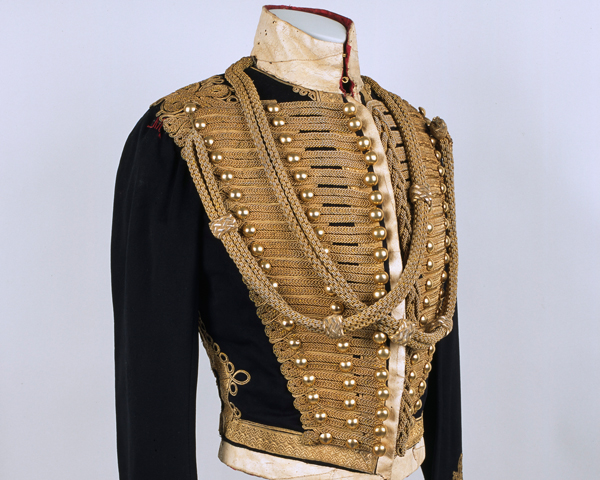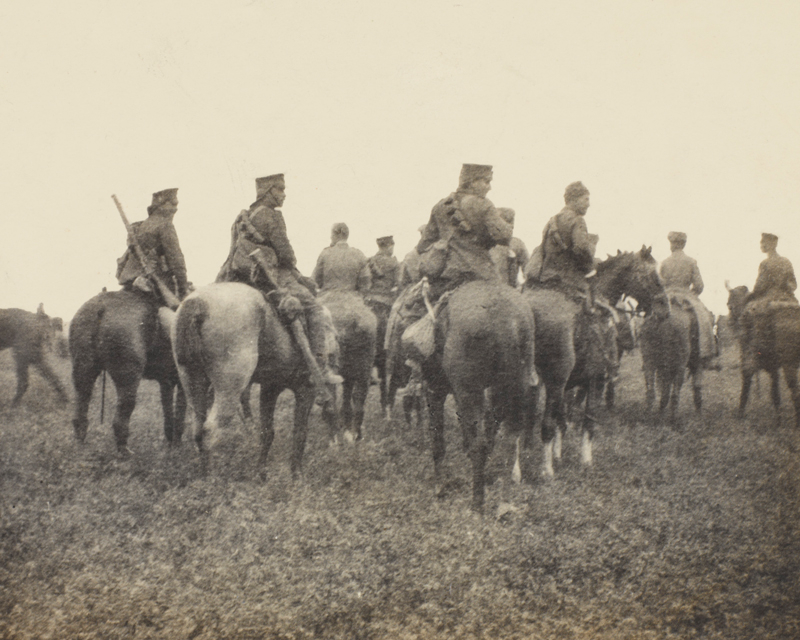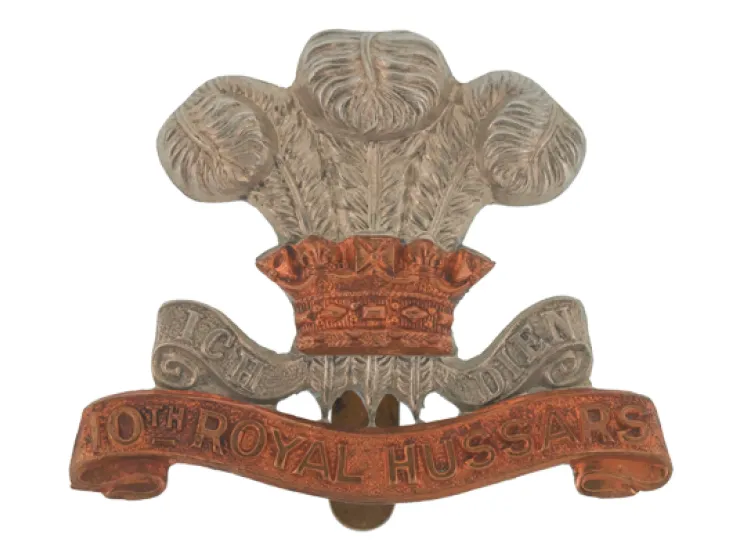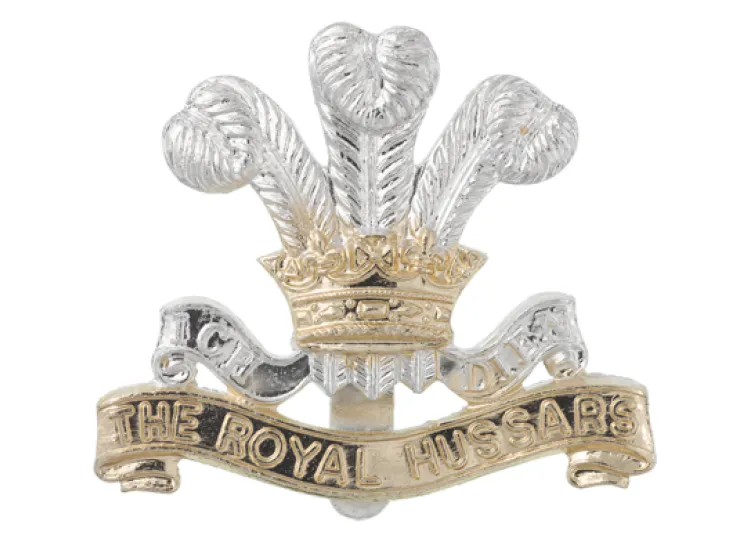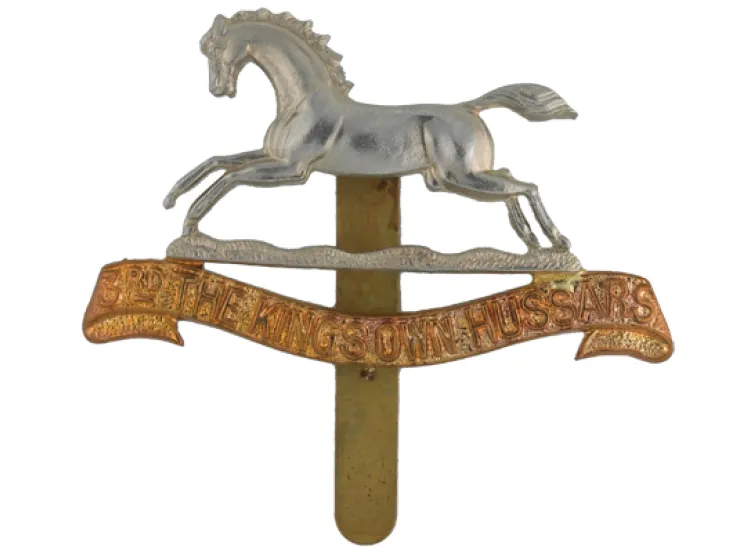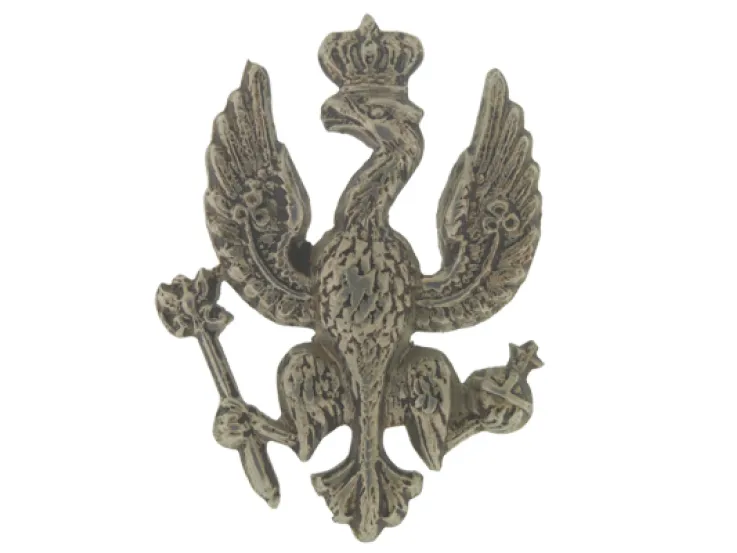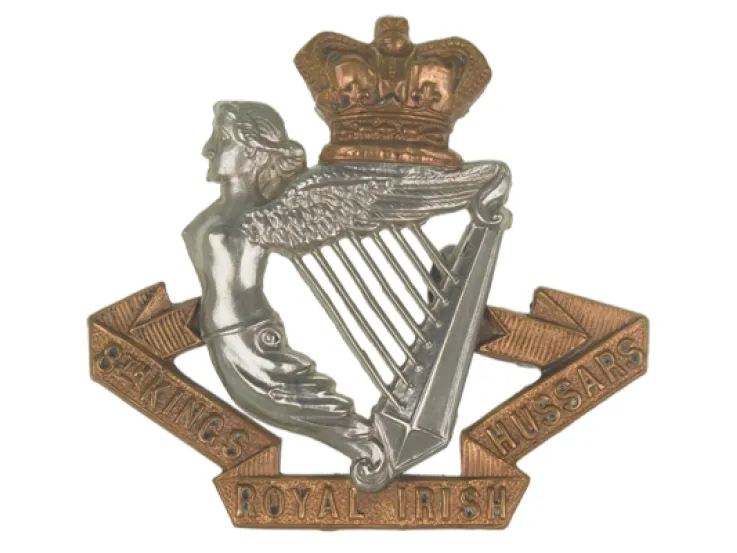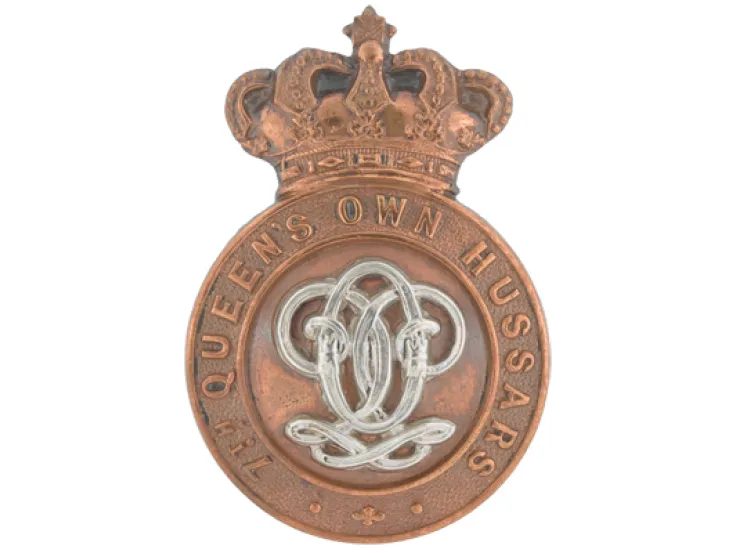Origins
In July 1715, Jacobite discontent was approaching crisis point in Scotland. The new monarch, King George I, ordered that nine dragoon regiments be raised. One of these was the unit that would, in 1751, be numbered the 11th Dragoons. The rebellion broke out two months later and a detachment of the regiment stormed the barricades at Preston as dismounted infantry.
In the Second Jacobite Rebellion, 30 years later, one troop from the regiment fought in the Hanoverian defeat at Clifton Muir, the last battle on English soil. It also pursued the fleeing Highlanders at Culloden (1746).
During the Seven Years War (1756-63), the regiment took part in raids on the French ports of St Malo and Cherbourg. Then, from 1759, the entire regiment served in Germany, fighting at Warburg (1760) and Villinghausen (1761).
In 1783, it was retitled as the 11th Regiment of Light Dragoons.
War with France
In 1793, it sent two squadrons to fight in France and the Low Countries, serving at Famars and Valenciennes. It returned to Europe in 1799, fighting at Alkmaar.
The following year, it sent men from its ‘C’ Squadron to Egypt to join General Ralph Abercrombie, a former commander of the regiment. Abercrombie was so impressed by their conduct that he requested that the squadron be allowed to parade in the place of honour to the right of the line, a tradition still perpetuated by its successor regiment.
It fought in the Peninsular War from 1811 to 1813, including at Badajoz (1812) and Salamanca (1812), before deploying to Belgium in 1815, capturing the last French guns still firing at Waterloo (1815). It then joined the Army of Occupation in Paris.
Quiz
One of the nicknames of the 11th Hussars was the 'Cherry Pickers', but where did this originate from?
In 1811, during the Peninsular War in Spain, the regiment was surprised by the French while resting in a cherry orchard.
19th century
In 1819, it set off for its first Indian posting, during which it was involved at the Siege of Bhurtpore in the Jat War (1825-26). This lasted until 1838 and left all but 224 men of the regiment unfit for service. It was then stationed in Kent to bring itself back up to strength.
When Prince Albert landed at Dover in 1840, the regiment provided his escort as far as Canterbury and part of the escort at his ensuing wedding to Queen Victoria. He subsequently adopted it, becoming its colonel, converting it to hussars in 1861, and granting it his name, title, motto, crest and crimson livery trousers.
Charge
The regiment served in the Crimean War (1854-56), where it fought at the Alma (1854) and took part in the Charge of the Light Brigade at Balaklava (1854), losing five officers and 55 men.
It spent much of the rest of century in England and Ireland. This was interrupted by two more Indian deployments, from 1866 to 1878 and from 1890 to 1899, and garrison duties in South Africa and Egypt.
World Wars
In August 1914, it joined the British Expeditionary Force, remaining on the Western Front throughout the First World War (1914-18) in both a mounted and dismounted role. Its engagements included Mons and Nery in 1914 and Ypres in 1915.
In the 1920s, it garrisoned Egypt and India and, in 1928, became one of the first British cavalry units to mechanise. The regiment then deployed to Egypt and Palestine for much of the 1930s, manning the border with Italian Cyrenaica during the Abyssinian crisis and suppressing the Arab Revolt.
It fought in the Western Desert during the early years of the Second World War (1939-45), where its engagements included Beda Fomm (1941) and the Second Battle of El Alamein (1942). It later moved on to Italy in 1943 and North West Europe from June 1944 to the war’s end.
Post-war
It remained on occupation duty in Germany until 1953, when it deployed to the Malayan Emergency (1948-60). It served in Northern Ireland in 1959 and sent two troops to Aden in 1960.
Legacy
The last full-unit deployment for the regiment was seven years in Germany from 1962. At the end of this, it returned to England to amalgamate with the 10th Royal Hussars (Prince of Wales's Own), forming The Royal Hussars (Prince of Wales's Own).
Regimental museums
The National Army Museum works with a network of Regimental and Corps Museums across the UK to help preserve and share the history and traditions of the Army and its soldiers.
Discover more about the 11th Hussars (Prince Albert's Own) by visiting HorsePower Museum in Winchester.


